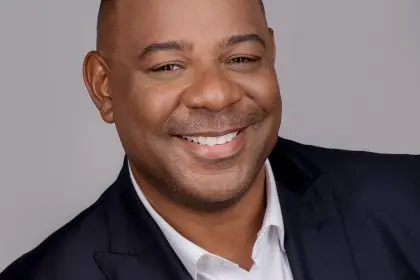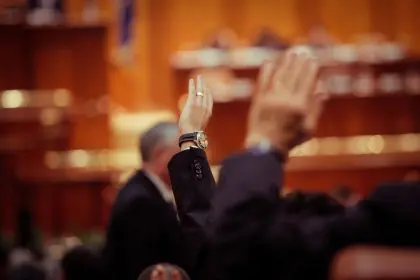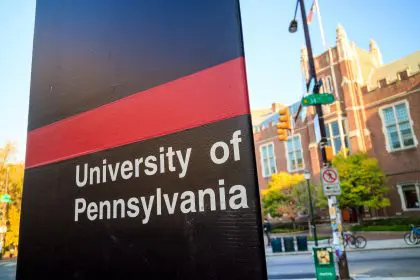The American higher education landscape is experiencing unprecedented turbulence as universities nationwide face mounting pressure to eliminate diversity, equity, and inclusion programs that have been cornerstones of campus life for decades. This seismic shift has triggered a wave of leadership resignations, program cancellations, and institutional restructuring that’s reshaping the very foundation of academic institutions across the country.
From coast to coast, college campuses are witnessing the systematic dismantling of initiatives designed to promote inclusivity and equal opportunity. Long-established graduation traditions have been cancelled, courses removed from curricula, and entire departments dedicated to fostering diverse learning environments have been shuttered. The scope and speed of these changes have left educators, students, and administrators grappling with a rapidly evolving educational landscape.
A prominent resignation sends shockwaves
The University of Virginia recently found itself at the center of this national transformation when its president announced his unexpected resignation amid federal scrutiny of the institution’s diversity practices. The departure marked a significant moment in the ongoing battle over the role of diversity initiatives in higher education, highlighting the impossible position many university leaders now find themselves navigating.
The resignation came as the Department of Justice launched an investigation into the university’s diversity programs, creating an untenable situation for leadership caught between institutional values and federal mandates. The president’s decision to step down rather than compromise his principles underscored the depth of the conflict facing academic institutions nationwide.
This high-profile departure has sent ripples throughout the higher education community, with many viewing it as a harbinger of similar challenges facing university leaders across the country. The situation exemplifies the difficult choices administrators must make when federal policy directly contradicts their institutional mission and personal convictions.
Federal pressure intensifies across campuses
The current administration has implemented comprehensive efforts to eliminate diversity programs from American universities, viewing these initiatives as discriminatory rather than inclusive. This perspective represents a fundamental shift in federal education policy, with far-reaching implications for how institutions approach student recruitment, faculty hiring, and campus programming.
Universities have received clear directives to dismantle their diversity offices, eliminate consideration of demographic factors in admissions and financial aid decisions, and restructure programs that promote inclusive campus environments. The scope of these mandates extends beyond simple policy changes, requiring institutions to fundamentally reconsider their approach to creating welcoming academic communities.
The federal investigation into various universities has created an atmosphere of uncertainty and fear among administrators who have dedicated their careers to building inclusive educational environments. Many institutions are struggling to balance compliance with federal mandates while maintaining their commitment to serving diverse student populations.
State-level mandates compound pressure
Political pressure on universities isn’t limited to federal initiatives. State governments across the country have implemented their own restrictions on diversity programs, creating additional layers of compliance requirements for educational institutions. Virginia’s government, led by Republican leadership, has been particularly aggressive in mandating the elimination of diversity initiatives at state universities.
The University of Virginia’s governing board, appointed by the state’s governor, issued direct orders to close diversity offices and phase out related policies in admissions and financial aid processes. These mandates came with clear declarations that diversity initiatives were no longer welcome at the state’s flagship university, leaving administrators with little room for interpretation or gradual implementation.
Similar directives have emerged in other states, creating a patchwork of regulations that vary significantly based on local political climates. Universities with campuses in multiple states face the additional challenge of navigating different regulatory environments while maintaining consistent institutional policies and values.
A legacy of advocacy meets political reality
The departing University of Virginia president had built a distinguished career advocating for inclusive education practices, both at UVA and during previous leadership roles at prestigious institutions like Harvard University’s Graduate School of Education. His commitment to diversity initiatives had been a defining characteristic of his administrative approach, making the current political environment particularly challenging.
Throughout his tenure, he had championed programs designed to increase access to higher education for underrepresented groups and foster campus environments where all students could thrive academically and socially. These efforts had earned recognition from educational organizations but also drew criticism from conservative groups who viewed such initiatives as discriminatory against other populations.
The tension between his advocacy for inclusive practices and mounting political pressure to eliminate these programs created an untenable situation. Federal officials expressed skepticism about his ability to implement the required changes, questioning whether diversity programs were being genuinely eliminated or simply rebranded under different names.
Conservative organizations mobilize opposition
Conservative advocacy groups have played a significant role in pressuring universities to eliminate diversity programs, arguing that these initiatives perpetuate discrimination rather than promoting equality. Organizations founded by former administration officials have been particularly vocal in their opposition, filing complaints and conducting investigations into university practices.
These groups contend that universities have been using diversity programs to implement discriminatory policies that favor certain demographic groups over others. They argue that true equality requires eliminating all consideration of demographic factors in university decision-making, from admissions to hiring to programming.
The sustained campaign by these organizations has included formal complaints to federal agencies, public criticism of university leaders, and detailed investigations into institutional practices. Their efforts have contributed to the current climate of scrutiny facing higher education institutions nationwide.
Nationwide impact on higher education
The University of Virginia situation represents just one example of a broader transformation affecting universities across the country. Harvard University and other prestigious institutions have faced similar pressures, including threats to federal funding for schools that maintain diversity initiatives despite federal mandates.
The administration’s Civil Rights Fraud Initiative has created a systematic approach to investigating schools suspected of continuing diversity practices, intensifying scrutiny on higher education institutions. This initiative has prompted many universities to proactively eliminate programs rather than risk federal investigation and potential funding losses.
The ripple effects extend beyond program elimination to fundamental questions about the purpose and values of higher education in American society. Universities that have long prided themselves on fostering diverse learning environments now find themselves navigating a dramatically different landscape where such efforts are viewed as problematic rather than beneficial.
Faculty and student responses
The elimination of diversity programs has generated significant concern among faculty members who have built their careers around inclusive education practices. Many professors worry that the changes will create less welcoming campus environments and reduce opportunities for meaningful dialogue across different perspectives and backgrounds.
Students, particularly those from underrepresented groups, have expressed anxiety about what these changes mean for their educational experience and future opportunities. Campus organizations dedicated to supporting diverse student populations are struggling to maintain their missions within the new regulatory framework.
The uncertainty has also affected recruitment efforts, with some potential students and faculty members reconsidering their interest in institutions undergoing dramatic policy changes. Universities are grappling with how to maintain their appeal to diverse applicant pools while complying with federal mandates.
Economic implications for institutions
Beyond the philosophical and social implications, the elimination of diversity programs carries significant economic consequences for universities. Many institutions have invested heavily in diversity initiatives over the past decades, creating specialized positions, programs, and infrastructure that now must be dismantled or repurposed.
The potential loss of federal funding for non-compliance creates additional financial pressure, forcing universities to weigh the costs of resistance against the benefits of their diversity programs. For many institutions, federal funding represents a crucial component of their operational budget, making compliance a financial necessity regardless of institutional preferences.
Private universities face different pressures, as they rely less heavily on federal funding but still must navigate the broader political and social climate surrounding diversity initiatives. These institutions must balance their institutional autonomy with the practical realities of operating in an environment increasingly hostile to diversity programs.
Leadership challenges across higher education
University presidents and administrators nationwide are facing unprecedented challenges as they attempt to lead their institutions through this period of dramatic change. Many entered their roles with the expectation that promoting diversity and inclusion would be central to their mission, only to find themselves required to dismantle the very programs they championed.
The leadership exodus isn’t limited to high-profile resignations like that at the University of Virginia. Across the country, administrators are reassessing their roles and considering whether they can effectively serve their institutions under the current regulatory environment. This brain drain threatens to deprive universities of experienced leaders precisely when they need stable guidance most.
Succession planning has become increasingly complicated as institutions struggle to find leaders willing to take on roles that require implementing policies they may personally oppose. The pool of qualified candidates willing to navigate these challenges continues to shrink as the political pressure intensifies.
Looking toward an uncertain future
The transformation of American higher education shows no signs of slowing, with continued pressure from federal and state governments to eliminate remaining diversity initiatives. Universities are being forced to fundamentally reconsider their approach to creating inclusive campus environments while maintaining compliance with evolving regulatory requirements.
The long-term implications of these changes remain unclear, but early indicators suggest a significant shift in how universities approach student services, faculty development, and campus programming. Institutions are exploring alternative approaches to supporting diverse student populations within the constraints of current regulations.
Educational leaders continue to grapple with questions about how to maintain their institutional mission while adapting to a dramatically different regulatory landscape. The ongoing tension between federal mandates and institutional values promises to shape higher education for years to come, with the ultimate outcome still uncertain as universities navigate this unprecedented period of change.


















